In fact, the dams built by beavers serve not only as their homes but also provide immense benefits to the ecosystem.
Humans are not the only species on Earth that use technology to manipulate their environment and construct impressive structures. Beavers, the second-largest rodents on our planet, possess similar capabilities to humans in certain aspects.
They can build dams that can last for decades or even longer. Moreover, unlike most human-made structures—which often lead to deforestation and biodiversity loss—beaver dams have the opposite effect: they enhance species richness, reduce soil erosion, prevent flooding, improve water quality, and of course, provide beavers with a cozy home.
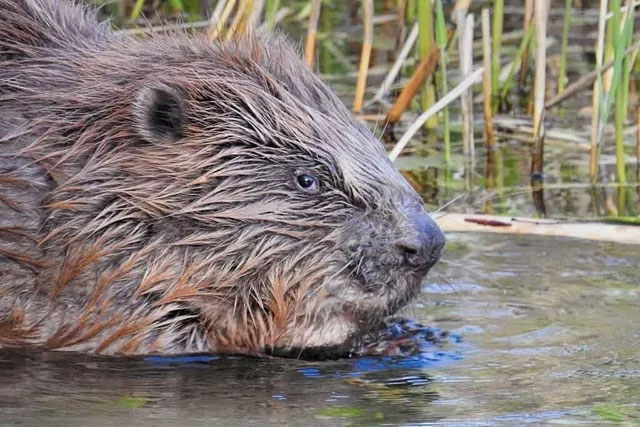
Beavers can build dams that can last for decades.
The most significant advantage of beaver dams is that they promote the development of natural wetlands. According to a report from the United Nations, nearly 40% of all species (including many endangered organisms) on Earth depend on wetlands for survival. Therefore, beavers play a crucial role in enhancing and maintaining the health of many ecosystems.
Due to their ability to alter the natural landscape with their building skills, beavers are also known as ecosystem engineers. Beaver dams can even help filter pollution, and the impact of beavers on the environment is substantial—and often positive.
Why Do Beavers Build Dams?
Beavers are preyed upon by animals such as coyotes, bears, lynxes, foxes, wolves, and humans, who can easily catch them on land—but in the water, beavers can quickly escape thanks to their webbed feet, which are better suited for swimming than walking.
This is also why beavers need to build dams in waterways to avoid the reach of predators. These dams create ponds and deep water holes where beavers can build their homes.
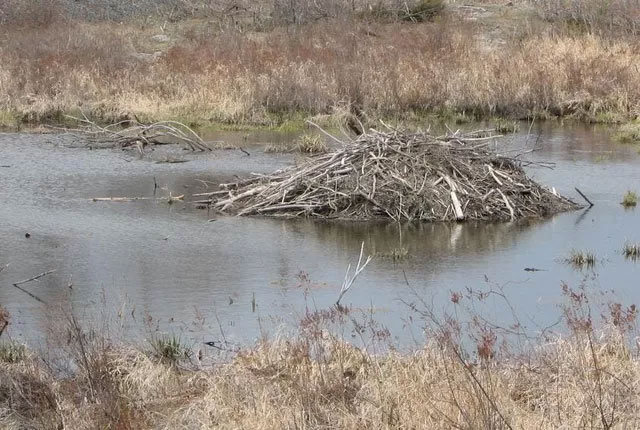
To avoid the reach of predators, beavers build dams in waterways.
Fast-flowing water can damage their homes and make them wet, but beaver dams help keep their lodges dry, warm, and protected at all times by acting as a barrier. The dams slow down water flow and cause the water level to rise behind them, creating a suitable environment for beavers.
Beaver lodges are always built in lakes, ponds, and deep streams so that when the water begins to freeze in winter, their underwater entrances remain unobstructed.
Furthermore, lodges with underwater entrances are not easily accessible to land predators, and in emergencies, they can also be used as escape tunnels. Thus, these dams not only enhance the comfort of their lodges but also ensure their safety.
However, beavers do not always build dams for their lodges. If they cannot find suitable water areas for dam construction, they can still create homes by burrowing into the ground.
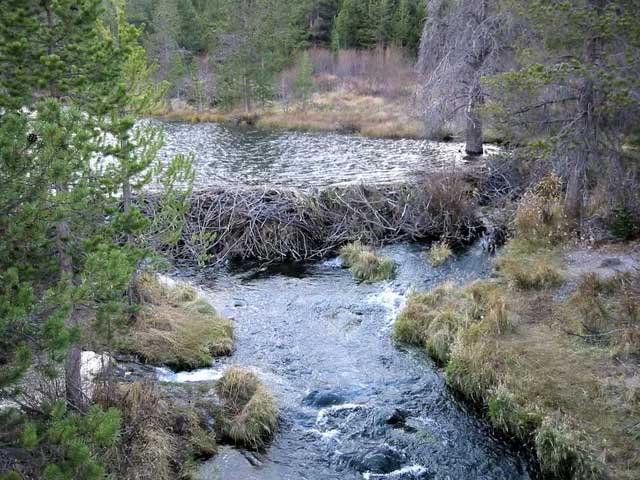
Beaver lodges are always built in lakes, ponds, and deep streams…
How Are Beaver Dams Built?
One thing is certain: beavers do not have access to or use the advanced tools and machinery that we do, but they do have strong jaws and highly developed incisors. Additionally, beavers are quite strong and can carry and drag objects that weigh as much as they do. These impressive physical traits enable them to construct dams and lodges that can last for many years. For example, the largest beaver dam ever discovered in Wood Buffalo National Park, Alberta, Canada, is believed to have been built in the 1970s. This dam is approximately 850 meters long, and researchers believe it has been used and maintained by multiple generations of beavers.
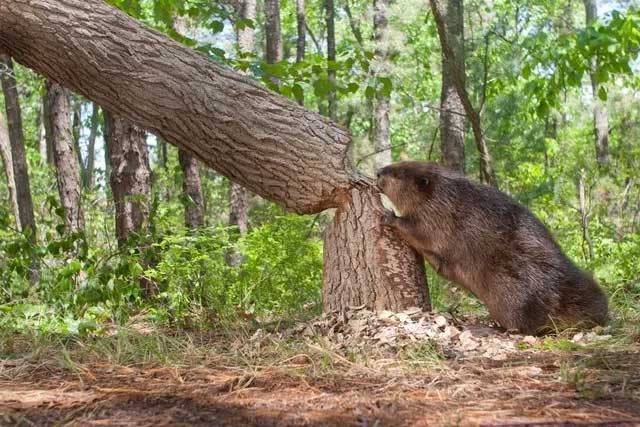
Beavers gnaw on thick tree trunks and branches near riverbanks or lakes…
However, not all beaver dams are that large; in fact, they typically range from 1 to 2 meters high and nearly 100 meters long. The construction of a beaver dam begins with beavers gnawing on thick tree trunks and branches located near riverbanks or lakes. The fallen trees and branches then block the water flow, with many logs and branches being arranged together to form a solid dam base.
Next, beavers begin to pile mud, stones, grass, branches, leaves, and small plants around the base of the dam to further expand and strengthen the structure. When the water level on one side of the dam is deep enough to create an entrance to the lodge that can withstand winter, beavers start building their lodge with resting and feeding chambers within the dam structure. Beavers rest, store food, mate, and raise their young in their lodges. Typically, a beaver family (consisting of 5 to 10 members) will own a specific dam or lodge, and if other beaver families attempt to intrude, they will not hesitate to fight fiercely to defend their home.
The Importance of Beaver Dams to Our Ecosystem
Unfortunately, our planet lost 35% of its wetland area by 2015, and as the remaining wetlands are disappearing rapidly, 25% of species that inhabit these wetlands are now facing extinction. However, beavers contribute significantly to the conservation of these remaining areas.
The deep ponds created by beaver dams not only provide beavers with shelter from predators but also promote the development of wetlands, which are rich ecosystems particularly favorable for the growth of fish, birds, frogs, otters, and many other endangered plant and animal species. Wetlands are carbon-dense ecosystems and play a crucial role in regulating the global climate.
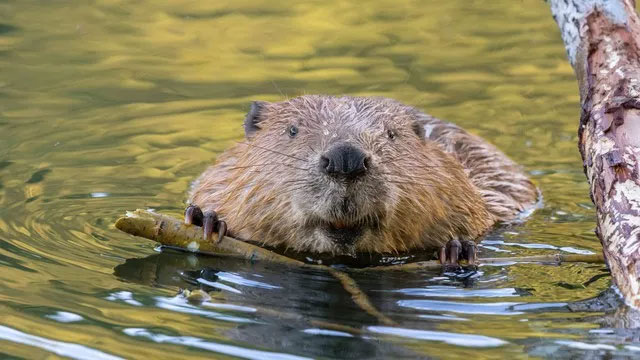
…then beavers start to pile mud, stones, grass, branches, leaves, and small plants around the base of the dam.
Recent studies have consistently shown that beavers can play a role in conserving ecosystems, and their positive impacts through their dams far exceed those of human actions.
By slowing down water flow to create a water reservoir, beaver dams prevent soil erosion and flooding, while increasing water content in the soil, which leads to the formation of new wetlands.
Additionally, beaver dams also prevent harmful chemicals from seeping deep into the ground and oceans, acting as a water filter and trapping sediments. By creating these dams, beavers play a vital role in managing our ecosystems, which is why they are considered a keystone species in natural ecosystems.
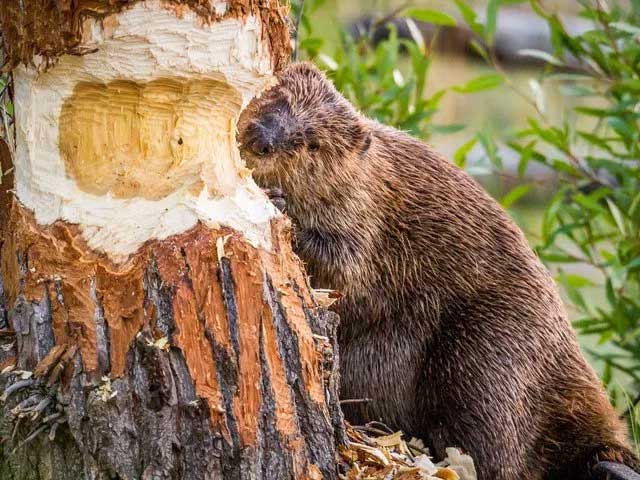
Beavers can play a role in conserving ecosystems.
An experiment conducted in 2016 demonstrated that building beaver dams in habitats increased natural complexity and protected populations of endangered fish—Oncorhynchus mykiss (also known as rainbow trout or steelhead).
A 2018 case study highlighted that the habitat changes caused by beavers affected the composition of benthic organisms in rivers and led to the development of invertebrates. Interestingly, even after beavers left the altered habitat, the ponds formed by beaver dams continued to support biodiversity in the area.
Another study published in November 2020 revealed that beaver dams improve groundwater levels, support the respiratory processes of microorganisms, promote the growth of lotic species and lentic plants, positively affecting the biochemical cycles occurring in nature. These dams provide resilience against drought and increase food production. A recent study from the National Resources Research Institute (NRRI) also indicated that beaver dams could enhance the availability of freshwater and significantly contribute to the conservation of wetland ecosystems.





















































